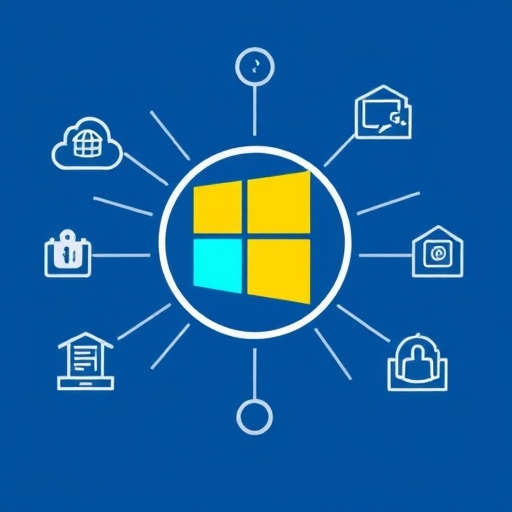Microsoft Entra ID (formerly Azure Active Directory or Azure AD) offers several tiers of subscription plans designed to meet different organizational needs for identity and access management
Entra ID P1 and Entra ID P2 are two premium plans that provide advanced features beyond the basic functionality of the free or basic versions of Entra ID.
These plans are often used by larger organizations or those with more complex identity and access management requirements.
Overview of Microsoft Entra ID P1 and P2:
Entra ID P1
Provides advanced features for managing users and groups, as well as more granular control over access to applications, and enhanced security features.
Entra ID P2
Includes all the features of P1, with additional advanced capabilities like Identity Protection, Privileged Identity Management (PIM), and Access Reviews, which are particularly important for large enterprises, regulated industries, or organizations requiring strict governance and compliance.
Microsoft Entra ID P1 Features
Entra ID P1 offers several premium features that help organizations manage users, enhance security, and control access to applications and resources.
1.Conditional Access
With P1, you can create and enforce conditional access policies to control how and when users can access apps and services based on specific conditions (such as location, device, and user risk).
This is essential for securing access to both cloud-based and on-premises applications in a more granular way.
2.Self-Service Group Management
Users can manage group memberships (create, update, delete) without admin intervention.
This feature simplifies administration for organizations with many users and groups.
Admins can delegate group management to specific users or groups to reduce the workload on IT.
3.Advanced Security Reports and Monitoring
Entra ID P1 includes more advanced reporting and monitoring capabilities, providing visibility into user activity, sign-ins, and potential security risks.
It also includes activity logs to support auditing and troubleshooting, helping organizations monitor user access and behavior.
4.Enterprise State Roaming
Enterprise State Roaming is available in Entra ID P1, allowing users’ settings and preferences (such as app configurations and personalization) to roam across devices.
This improves the user experience by ensuring that settings are consistent, regardless of which device they are using.
5.Access to Microsoft Applications
P1 provides seamless access to Microsoft applications such as Microsoft 365 (Word, Excel, PowerPoint, etc.), Teams, SharePoint, and OneDrive.
6.Group-Based Access Management
Enables group-based access management for applications, simplifying the process of granting or denying access to apps for multiple users based on their group membership.
7.Application Proxy
Azure AD Application Proxy is available, which allows secure remote access to on-premises applications.
This is particularly useful for hybrid environments where some apps remain on-premises while others are in the cloud.
Microsoft Entra ID P2 Features:
Entra ID P2 builds on the features of P1 and introduces additional advanced capabilities, particularly around security, identity governance, and privileged identity management.
1.Privileged Identity Management (PIM)
PIM is one of the key features of Entra ID P2.
It allows you to manage and control privileged access to Azure AD and other Microsoft resources.
With PIM, you can just-in-time (JIT) privileged access, meaning users only get elevated privileges when needed and for a limited time, reducing the risk of excessive or unnecessary permissions.
PIM also provides audit logs and notifications when privileged roles are assigned or activated, ensuring accountability.
2.Identity Protection
Identity Protection uses machine learning and risk-based policies to detect potential vulnerabilities or suspicious sign-in activity.
P2 allows you to configure risk-based conditional access policies, such as blocking access or requiring multi-factor authentication (MFA) when risky behavior is detected (e.g., sign-ins from unfamiliar locations or devices).
Entra ID P2 helps automatically remediate suspicious activity and provides detailed insights into the risk levels associated with users and their behaviors.
3.Access Reviews
Access Reviews in P2 allow you to periodically review and validate users' access to applications and resources.
This is a key feature for maintaining least privilege access, ensuring that users still need the access they have.
Reviews can be automated, and administrators can require managers or application owners to review access for their users.
For example, reviews can be set up for employees’ access to financial systems or confidential data.
4.Conditional Access with Risk-Based Policies
While P1 provides basic conditional access, P2 enhances this by integrating Identity Protection with conditional access to take automatic actions when high-risk events are detected.
For example, you can configure conditional access to require multi-factor authentication (MFA) or deny access if Entra ID detects unusual sign-in patterns or compromised accounts.
5.Continuous Access Evaluation
Continuous Access Evaluation (CAE) is a feature that allows applications to react to changes in user risk or policy settings in real-time.
For example, if a user's risk score increases (e.g., due to unusual sign-in activity), CAE ensures that access to applications is revoked immediately, rather than waiting for the session to expire.
6.Custom Security Policies
Custom Security Policies allow organizations to implement fine-grained access controls based on business requirements, such as enforcing MFA for specific applications or user groups.
7.Advanced Group-Based Access Management
In addition to P1's basic group-based management, P2 includes more sophisticated features, like dynamic groups and automatic group membership based on user attributes.
P2 also provides support for entitlement management, where users can request access to specific resources and applications, and administrators can define approval workflows.
8.Enhanced Reporting
P2 includes more advanced reporting features, such as deeper insights into user activity, risks, and security alerts.
It allows organizations to generate more customized and detailed reports for compliance and auditing purposes.
Summary Comparison
| Feature/Service | Entra ID P1 | Entra ID P2 |
|---|---|---|
| Privileged Identity Management (PIM) | Not included | Included |
| Identity Protection | Not included | Included (risk-based sign-in policies, MFA) |
| Access Reviews | Not included | Included (for access governance) |
| Conditional Access | Basic policies | Advanced policies with risk detection and MFA |
| Enterprise State Roaming | Included | Included |
| Self-Service Group Management | Included | Included |
| Application Proxy | Included | Included |
| Dynamic Groups | Not included | Included |
| Access to Azure AD Features | Limited | Full access to advanced Azure AD features |
| Advanced Reporting and Monitoring | Basic reports | Detailed, customizable reports |
| Custom Security Policies | Not included | Included |
When to Choose P1 vs. P2
Microsoft Entra ID P1 is ideal for organizations that need advanced identity management and access control features such as SSO, conditional access, and group management but don't require the more advanced security and governance features like privileged identity management or identity protection.
Microsoft Entra ID P2 is best suited for organizations that need advanced security, access governance, and privileged access management, particularly for those with stringent compliance requirements, regulatory needs, or complex organizational structures.
Conclusion
Entra ID P1 provides a robust set of identity and access management features for most businesses and small to mid-sized organizations.
Entra ID P2 offers more comprehensive security and governance capabilities for larger organizations, enterprises, and those that require stricter compliance, access reviews, and risk management.























Leave a Reply